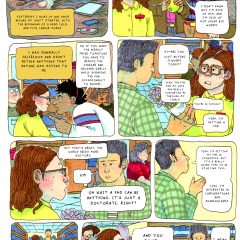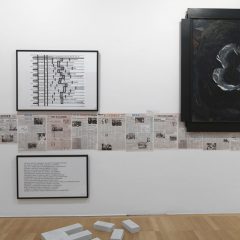Tanja Ostojić spent the last decade hunting up and meeting 33 women – each named “Tanja Ostojić.”
The Berlin-based Serbian performance artist contacted women who shared her same first and last name and travelled to meet them and involve them in a project that pivots on a random association – a shared name – to drill down to various political, economic and gender strata. The result is “The Lexicon of Tanjas Ostojić,” a book, exhibitions and art works and performances by Ostojić and her “name sisters” – Tanjas — who are not artists.

At the heart of the project is the dissolution of Yugoslavia through wars, ethnic cleansing, economic upheaval and a multi-decade diaspora.
Tanja Ostojić, who I met in Paris some 20 years ago, has long exhibited controversial works on the subject of political, social, economic and personal borders – that is, identity. What follows is an interview about her recent project conducted via email last month.
The performance artist Tanja Ostojic
Much of Ostojić’s work is “non-material performance.” In 1996 she performed standing, motionless and naked save for a dusting of white marble on a white square meter of marble dust – an ode to Kasimir Malevich. That was her performance “Personal Space” from Manifesta 2 in Luxembourg in 1996.
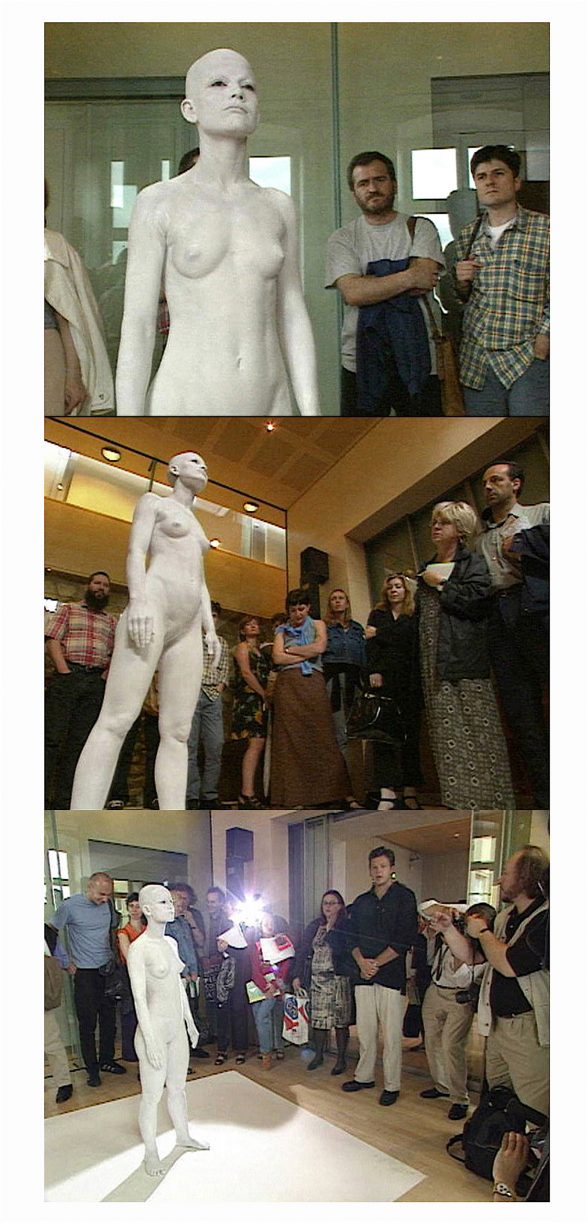
Venice Biennale curator Harald Szeemann “discovered” her there and then five years later she performed “I’ll Be Your Angel” (2001) at the Biennale, following Szeemann all around Venice…in Christian Lacroix couture dresses.
Somewhat of a mystery woman, Ostojić purposely remained silent and attracted gobs of press. Who was she? No one knew what to make of her presence! Ostojić’s work often functions this way – riffing off of expectations. For example, a “gesture” piece Ostojić made in 1997 had her offering boxing gloves to police officers on the streets of Belgrade… asking them to fight – literally – for democracy.
Another non-material work had to do with crossing the border from Slovenia to the EU – actually Austria by foot… and then a work that that resulted in an actual “marriage – “Looking for a husband with an EU Passport.”
Matthew Rose – Your Lexicon of Tanjas Ostojić brings together 33 women who all share your exact name but whose origins, religious and cultural identities span years and geographies. They mostly come from the country once known as Yugoslavia. What set you on this course to find your “name-sisters” ?
About 10 years ago, a friend of mine Lidija Bošković wanted to introduce me to her colleague ‘Tanja Ostojić’ who worked at the National Library in Belgrade, but we never had the chance to meet.
But it got you thinking…
Yes. A few years ago I did a Google search and found a few other Tanjas Ostojić. Out of curiosity, I started adding them as friends on Facebook in 2010.
I found a Tanja Ostojić in Nordrhein-Westfalen, Germany, doing pedicures, and another Tanja Ostojić who was an insurance dealer in Chicago, and yet another Tanja Ostojić renting summer apartments on the island of Brač in Croatia.
Who was the first Tanja Ostojić you actually met?
I met the first Tanja Ostojić in early 2011 taking the tram from Basel, Switzerland. Tanja waited for me at the last tram station, and we crossed the border to Lörrach, Germany on foot and walked to her flat. She took me to her garden where she has a view of both France and Switzerland. Tanja is mathematics teacher who left Yugoslavia just before the war broke out in 1991. Her wish was to open her own mathematics school for children and senior citizens.

I brought a beautiful, empty book with me so my name-sisters could write something about themselves. I added photos of our meetings so that each subsequent Tanja would have a chance to read about the preceding Tanjas Ostojić.
And the second Tanja Ostojić?
Two months later, I met Tanja Ostojić in Belgrade. She is a lawyer, originally from Montenegro, and an animal rights activist. She sent me many pictures of her cats and dogs, and wrote some of her poetry in the book.
What did you ask them when you met these other Tanjas Ostojić?
I asked, “If you had the chance to meet other Tanjas Ostojić, what would you ask them? What would you like to know about them?” These questions bring us to ideas about self-esteem, how satisfied we are with our lives.
Different Tanjas, doing different things in different places…
The issues that have always interested me – migration, gender equality, labor conditions – could all be part of this project. If I found women who shared my first and last name – a playful and random choice of women from different generations and nationalities – I believed I could engage with them, and ask about their life stories.

The chance that there are other Tanja Ostojićs, seems odd but names are codified in cultures far and wide. I am actually in contact with a dozen Matthew Roses! Tell me about the name “Tanja.”
“Tanja” originally comes from the Greek “Tatjana.” When Orthodox Christianity spread to Russia the name became popular; it then moved from Russia to Yugoslavia. Tanja has freed itself completely from Tatjana and became a name on its own. So on our birth certificates, it says “Tanja.”
And Ostojić?
“Ostoja” appears in the archives of the Dubrovnik Republic from the 12th century; the ‘Ostoich’ family name appears for the first time in 1373. “Ostoich” family members were blue-blooded men or trades people. The Tanjas Ostojić I got in touch with are all of Yugoslavian origin: Slovenian, Croatian, German, Czech minority in Croatia, Montenegrin, Serbian, American, Bosnian, Caribbean – so the name does not belong to one ethnicity or nationality.
Do you see any correspondences between you and these other Tanjas? Do other Tanjas Ostojić share something in common?
The common Yugoslav history is the binding material for all name-sisters; most of us are real experts in migration!
I drew a migration map of approximately 35 Tanjas Ostojić within Europe that is two-and-half meters wide, and I tried to find out the year and the reason for each of our migrations. There were a lot of Tanjas Ostojic on the move at the beginning of the 1990s because of the war, but also after the war in Bosnia circa 1995-96.
When you decided to launch this project in Venice in 2011, were you seeking to more deeply understand your own cultural identity – or something else?
I was invited by the Ministry of Culture of the Republic of Serbia to propose a project for the Serbian Pavilion at the Biennale di Venezia in 2011. When I was in Venice in the Giardini looking up at the façade of the pavilion I saw the word “Yugoslavia” carved into it. It represented all the issues I’d been involved with for years. That was the moment I started conceptualizing and planning for the Lexicon of Tanjas Ostojić project.
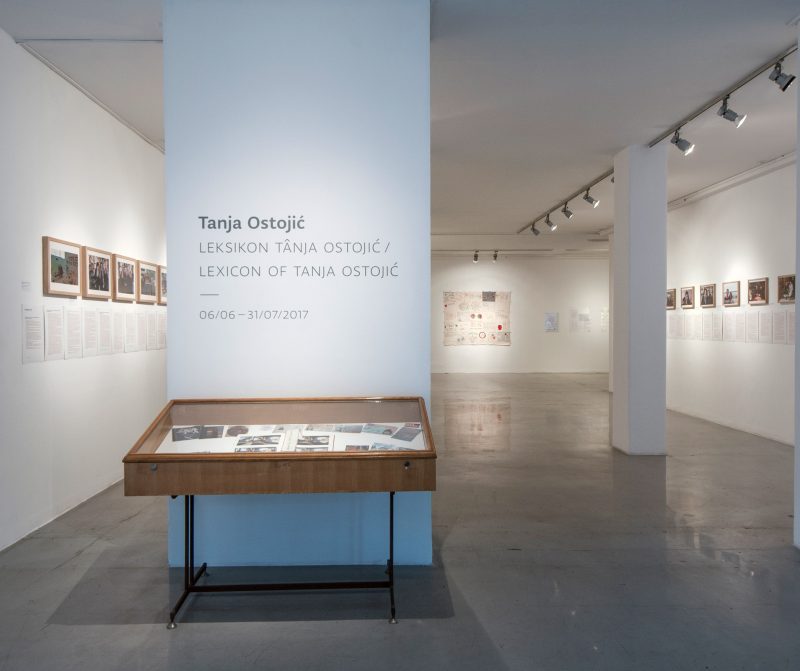
The history of your name sisters is in effect the recent history of Yugoslavia and the wars that have since divided it.
I had the impression that the new national states, new religious identities, wars, transition and poverty in the region were a huge step backwards for what were, in large part, emancipated Yusgoslav women. Especially with migration. I wanted to know how have these political changes influenced the position of women in families and at workplaces.
Yugoslavia has essentially disappeared…
Over the past several decades, yes, there is a marked trend for erasing all traces of Yugoslavian tradition and history. The Lexicon of Tanjas Ostojic project has the modest intention of engaging the oral histories of some of the women from post-Yugoslav geographies.
You’ve enlarged the community of Tanjas Ostojić … how do you see the identity of these women?
The women told me they felt their lives were enriched through encounters with the sisterhood, a new take on a cultural life, the artistic world and an invitation to create a collaborative art work that was exhibited. It was both amazing and transformative.
And yes… we Tanjas are still in touch!
About the book
The book illustrates the Tanjas Ostojić meeting all over Europe with photographs of collaborative works – ceramics, embroideries, drawings, recipes for apple cake, rice pudding and even ice cubes!
Interviews with fourteen “name sisters” are included, along with the favorite recipes of the Tanjas Ostojić, photographs of joint and individual art works. The double and group portraits form a visual narrative of the art work.
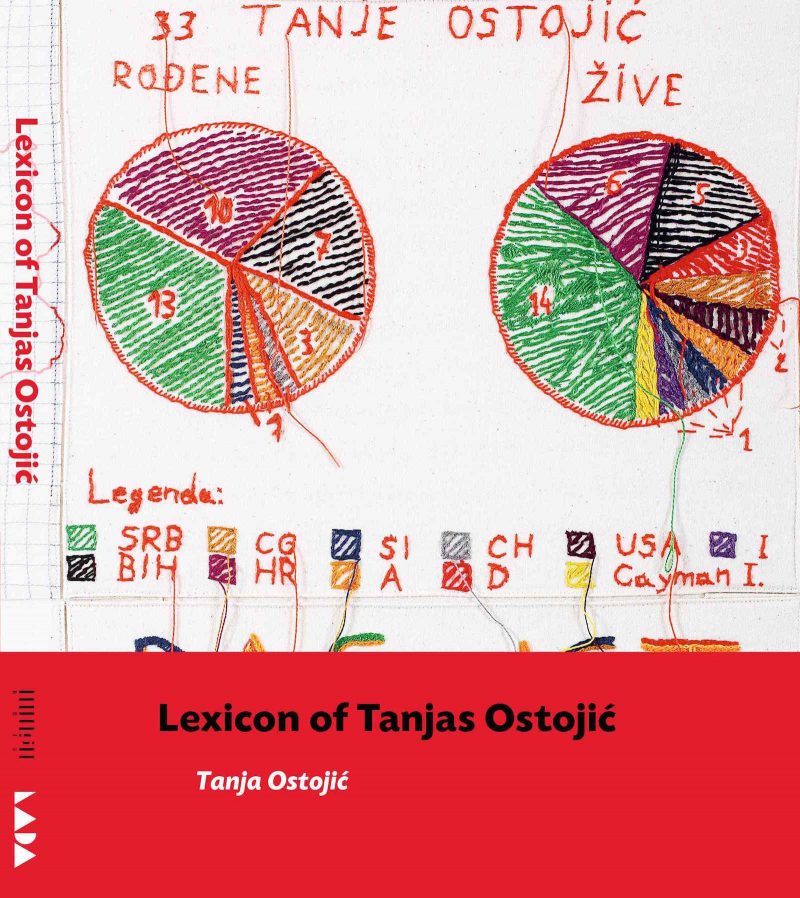
For more information on Tanjas Ostojić and to purchase “Lexicon of Tanjas Ostojić,” please see visit Live Art / UK or Ostojić’s site for the rest of the world.




